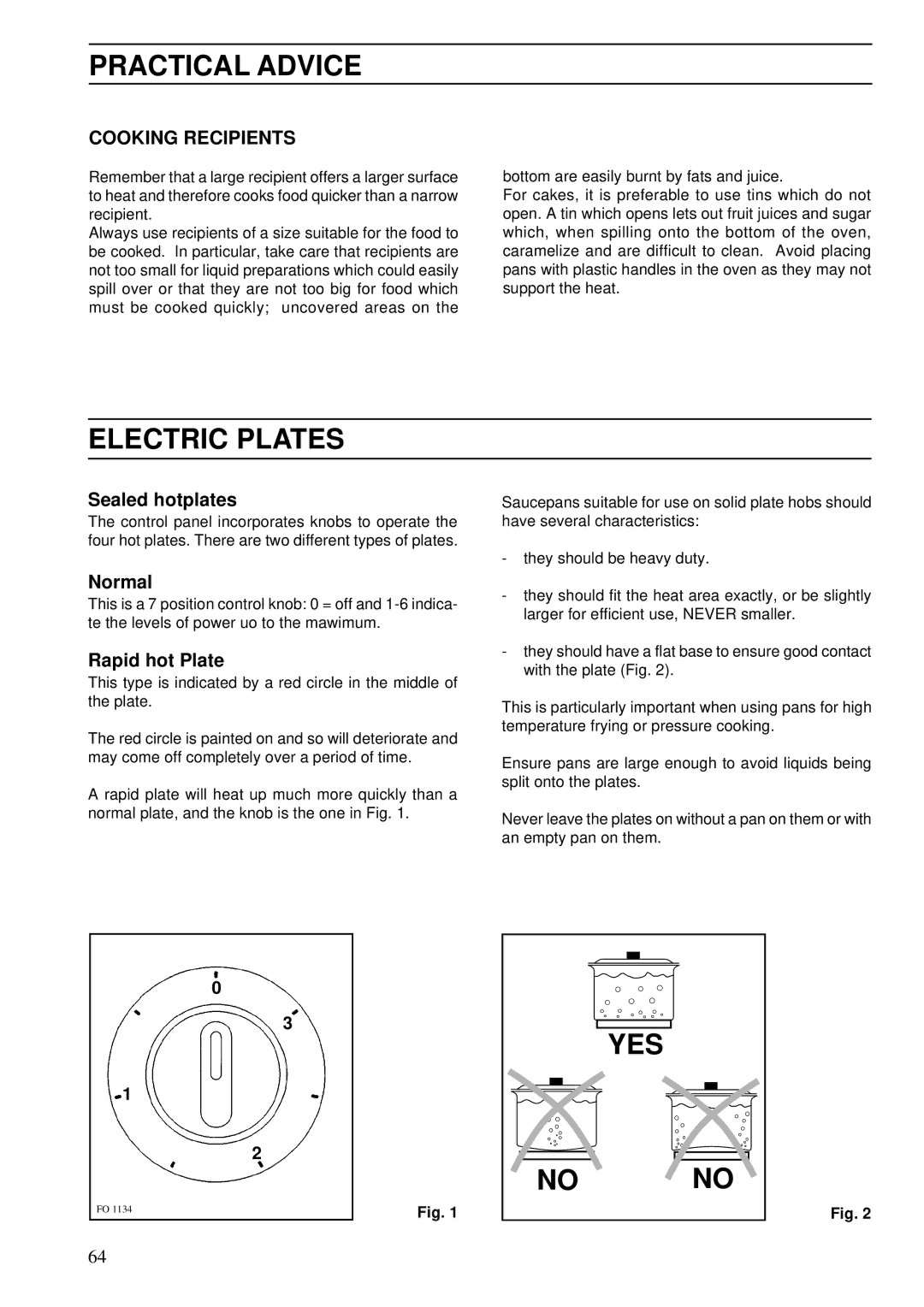
PRACTICAL ADVICE
COOKING RECIPIENTS
Remember that a large recipient offers a larger surface to heat and therefore cooks food quicker than a narrow recipient.
Always use recipients of a size suitable for the food to be cooked. In particular, take care that recipients are not too small for liquid preparations which could easily spill over or that they are not too big for food which must be cooked quickly; uncovered areas on the
bottom are easily burnt by fats and juice.
For cakes, it is preferable to use tins which do not open. A tin which opens lets out fruit juices and sugar which, when spilling onto the bottom of the oven, caramelize and are difficult to clean. Avoid placing pans with plastic handles in the oven as they may not support the heat.
ELECTRIC PLATES
Sealed hotplates
The control panel incorporates knobs to operate the four hot plates. There are two different types of plates.
Saucepans suitable for use on solid plate hobs should have several characteristics:
-they should be heavy duty.
Normal
This is a 7 position control knob: 0 = off and
Rapid hot Plate
This type is indicated by a red circle in the middle of the plate.
The red circle is painted on and so will deteriorate and may come off completely over a period of time.
A rapid plate will heat up much more quickly than a normal plate, and the knob is the one in Fig. 1.
-they should fit the heat area exactly, or be slightly larger for efficient use, NEVER smaller.
-they should have a flat base to ensure good contact with the plate (Fig. 2).
This is particularly important when using pans for high temperature frying or pressure cooking.
Ensure pans are large enough to avoid liquids being split onto the plates.
Never leave the plates on without a pan on them or with an empty pan on them.
0
3
1
2
FO 1134
Fig. 1
YES
NO NO
Fig. 2
64
